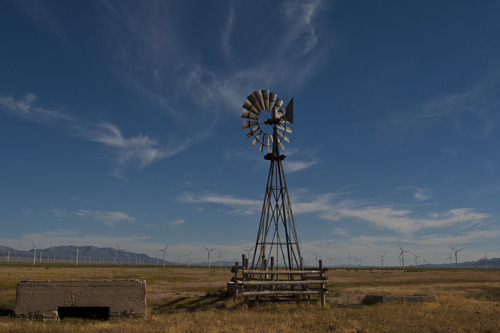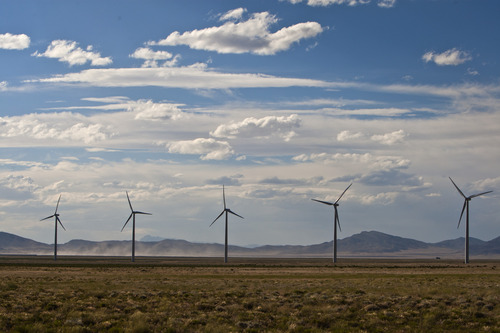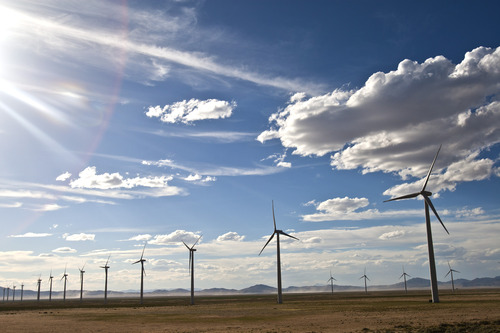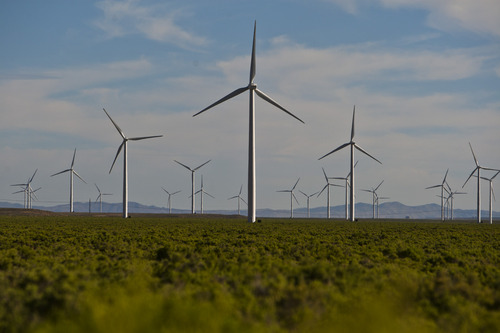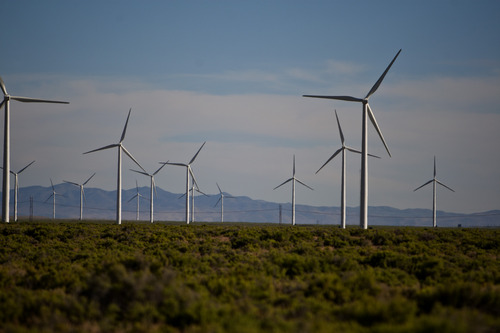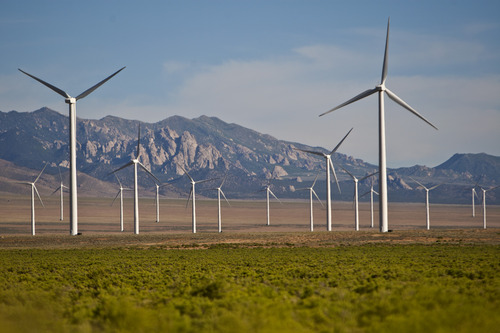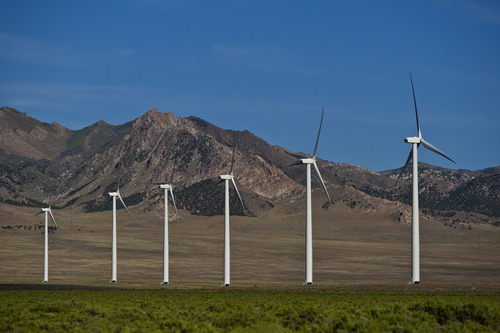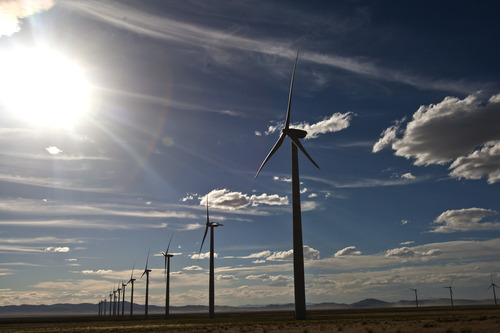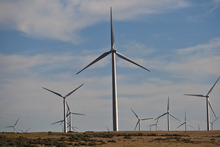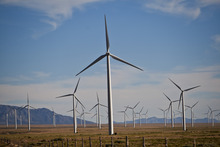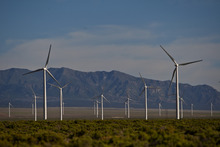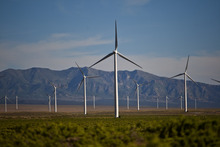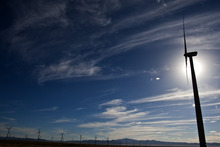This is an archived article that was published on sltrib.com in 2013, and information in the article may be outdated. It is provided only for personal research purposes and may not be reprinted.
Renewable-energy developers representing more than $620 million in proposed wind and solar projects are awaiting a ruling by the state's top utility regulators to decide whether they can move forward or must abandon Utah for greener states.
The Utah Public Service Commission (PSC) ruling will tell Rocky Mountain Power — and ultimately Utah consumers — how much to pay for renewable energy and power from other producers. That price, in turn, will determine whether several proposed projects are feasible.
The developers say Rocky Mountain Power undervalues green energy, and wants to pay prices comparable to the cost of energy produced from oil, gas and coal. They say the regulated utility's favored pricing methods don't account for savings on environmental and health impacts, among other factors.
Attorneys representing PacifiCorp — the parent of Rocky Mountain Power — on one side and the renewable developers on the other made their cases before the three-member PSC in recent days as to which methods the utility company should use to price out future projects.
By late August, or perhaps earlier, developers will know whether their projects will be valued highly enough to move them forward and provide power for tens of thousands of Utahns' homes, or whether the state remains among the bottom 15 green energy-producing states in the country.
"What we're after, of course, is a determination on avoided cost that balances the interest of customers, the utility ... and, of course, something that also is fair to developers of projects," Rocky Mountain Power senior consultant David Eskelsen said.
—
Hundreds of millions on the line • Rocco Vrba, a Sandy-based developer, is eagerly awaiting the ruling. He said he has $420 million in green energy projects on the line.
One of his proposed projects is an 80-megawatt wind farm in Tooele County.
"If the project goes forward, the county will nothing but benefit," Vrba said, adding if the project stalls — whether because of permitting or economics — it'll be a loss for everyone involved.
He's used to running the political gantlet, having developed multiple projects before, including a 400 megawatt project in Arizona. He also has a 160 megawatt, 94-turbine wind farm in Millard County that he anticipates will go online by the end of 2015. That project awaits final approval from Rocky Mountain Power under existing resource pricing, he said.
Although Vrba's Tooele project would be only half the size of his Millard County farm, it still will cost more than $120 million and would generate enough power for about 80,000 homes when the wind is blowing.
In addition to the PSC ruling, Vrba's Tooele project is also waiting for approval from the county, which has no ordinance allowing wind farms and where some planners and residents have expressed skepticism about the erection of massive turbines in certain areas.
Pittsburgh-based investors are ready to back the Tooele project, Vrba said, and investors will wait four more weeks before finding another project to back, perhaps in a more wind power-friendly state such as California, Texas or Illinois.
Vrba is joined by similar advocates and developers itching to exploit what they view as a largely untapped Utah green- energy market.
Luigi Resta, CEO of Scatech Solar North America, is another developer hoping to get a favorable PSC ruling. Resta proposed a 100 MW project in Iron County, which would cost an estimated $200 million, developed on 650 acres.
"From a cost perspective, now is the time to get these projects built," Resta said. "The costs are as low as we anticipate them going."
Developers like Vrba and Resta aren't the only interested parties involved in the PSC case.
—
Environmentalists • Utah environmental groups also are watching developments closely, with Utah Clean Energy having presented testimony about how it believes Rocky Mountain Power (RMP) — which gets 60 percent of its electricity from coal-based power plants, compared to a national average of 42 percent — should be required to pay for green energy.
Sarah Wright is executive director of Utah Clean Energy. She hopes the valuation method the PSC settles upon will provide incentives for developers to do business in Utah.
Wright said the key to the future of green-energy development in the state will rest on how the PSC determines that Rocky Mountain Power's "avoided costs" should be calculated.
When an outside developer builds its own power plant and sells that electricity to RMP, that can mean the utility doesn't have to lay out money to build its own generation — thus benefiting from the avoided cost. But calculating avoided cost isn't simple. For example, RMP may have been able to build a natural gas-fired plant to meet its needs for a lot less than it would cost to build a wind farm. So are RMP's avoided costs the price of the natural gas-fired plant or the wind farm?
Green energy developers want RMP's avoided cost to be calculated as high as possible because they'll be able to sell their electricity to RMP for more, generating a higher return on their investment.
RMP wants its avoided cost to be as low as possible because it doesn't want customers to overpay for electricity.
It'll be up to the PSC to decide what method is better at getting to that number.
Federal law, though, requires that such avoided costs for outside projects be calculated so they don't impact customers' bills.
Utah electricity ranks 47th cheapest in the country, according to annual data from the U.S. Energy Information Administration. And that in part explains why most power from renewable projects in Utah is sent to California, where consumers pay a higher price for electricity.
"The bottom line is that if [the PSC] values the capacity that the renewables bring, and they value the energy that it brings, Utah will likely see renewable energy development," Wright said.
Steven Oberbeck contributed to this article. —
Public hearing
A public hearing will be held Thursday from noon to 5 p.m. at Heber M. Wells Building, 160 E. 300 So., Room 403.


